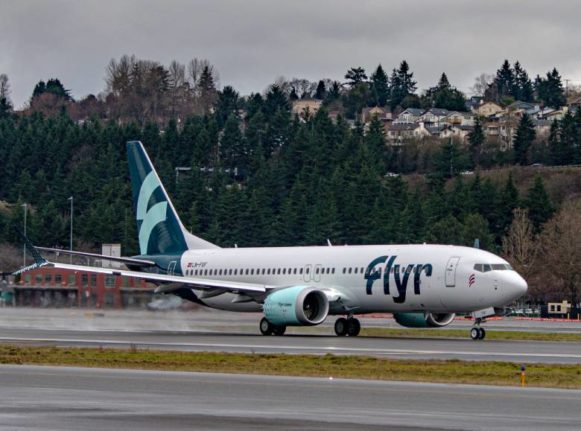The Flyr airline is cutting domestic routes in Norway in an attempt to save around 400 million kroner ahead of the Winter season. The company also plans to lay off employees.
In a press release, Flyr noted that they plan to keep the routes to a number of popular European destinations in operation but that only a limited number of domestic routes in Norway will be maintained this Winter.
The company will gradually increase its domestic route offer again throughout the Spring and Summer of 2023.
“We are facing a challenging Winter (season)… as a result of a record number of interest rate increases, overall high price growth, and very high electricity prices. It hits us hard as an industry and company because even fewer people want to travel,” Flyr’s CEO Tonje Wikstrøm Frislid noted.
“Combined with persistently high fuel prices, this means that we need to adjust the route program throughout the Winter. Unfortunately, there is no alternative to laying off some of our good colleagues. However, we are working to put in place voluntary and adapted arrangements to be able to keep as many employees as possible.
“By implementing these measures, we will be well positioned to come back in full force in the spring and summer,” she added.
European routes
Between November and March, Flyr plans to offer flights to a number of popular European destinations, including Alicante, Malaga, Las Palmas, Barcelona, Rome, Paris, Nice, Berlin, and Brussels.
The company will also fly from Oslo to Bergen and Trondheim, as well as offer “Christmas routes” between a number of cities in Norway in December, according to the press release.
“We have received a very good response to the routes to our European holiday destinations and will maintain a varied route offer throughout the Winter,” the CEO said.
“At the same time, we must acknowledge that it has taken longer than we had expected to build loyalty in the Norwegian business market on domestic routes in Norway, where well-established players have large market shares and the general desire to travel, not least on weekdays, is significantly lower than before the pandemic.
“We have spent too much time on getting solutions in place for the travel agencies, where most business customers book their domestic travel. The fact that the Norwegian authorities have injected billions into our competitors during the pandemic has not made the situation any easier,” Wikstrøm Frislid said.
Passengers who have booked tickets on routes that will not be operational this Winter will be contacted directly by Flyr.
“We understand that this is frustrating for passengers who now have to change their trip plans, but everyone affected will be contacted directly and given help to either change their trip or get their money back,” the Flyr CEO said.
Flyr’s flight route offer from November to March (Europe):
Oslo – Alicante
Oslo – Malaga
Oslo – Gran Canaria
Oslo – Bergen
Oslo – Trondheim
Oslo – Barcelona
Oslo – Milano
Oslo – Brussel
Oslo – Paris
Oslo – Roma
Oslo – Genève
Oslo – Nice
Oslo – Salzburg
Bergen – Alicante
Trondheim – Alicante
Flyr’s Christmas route offer:
Oslo – Bodø
Oslo – Evenes
Oslo – Tromsø



 Please whitelist us to continue reading.
Please whitelist us to continue reading.
Member comments